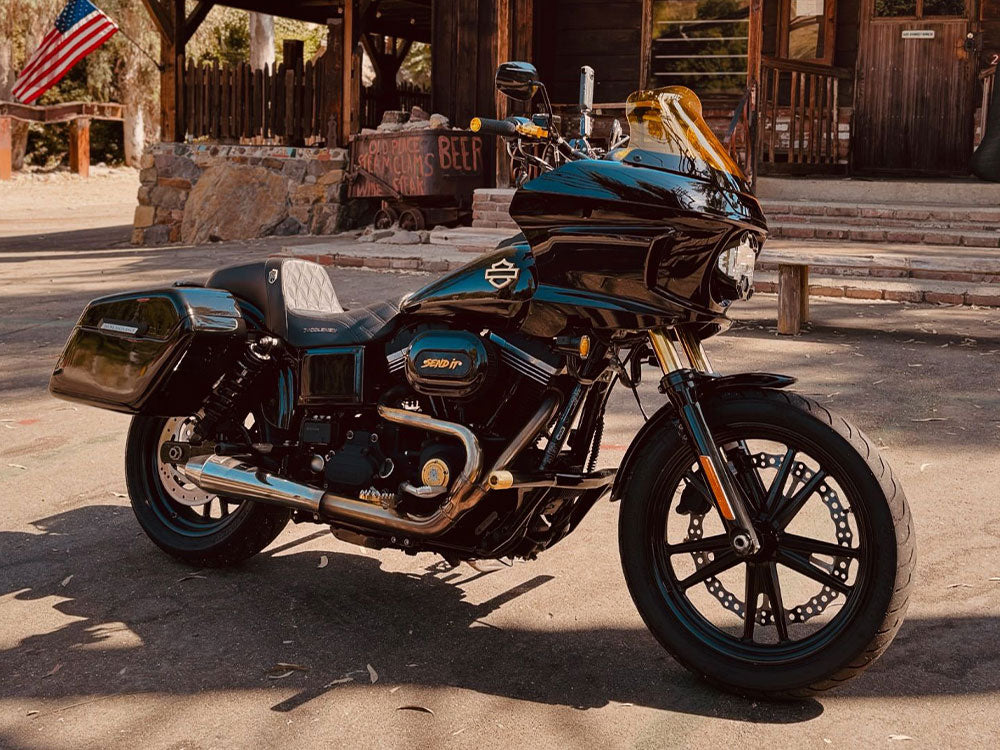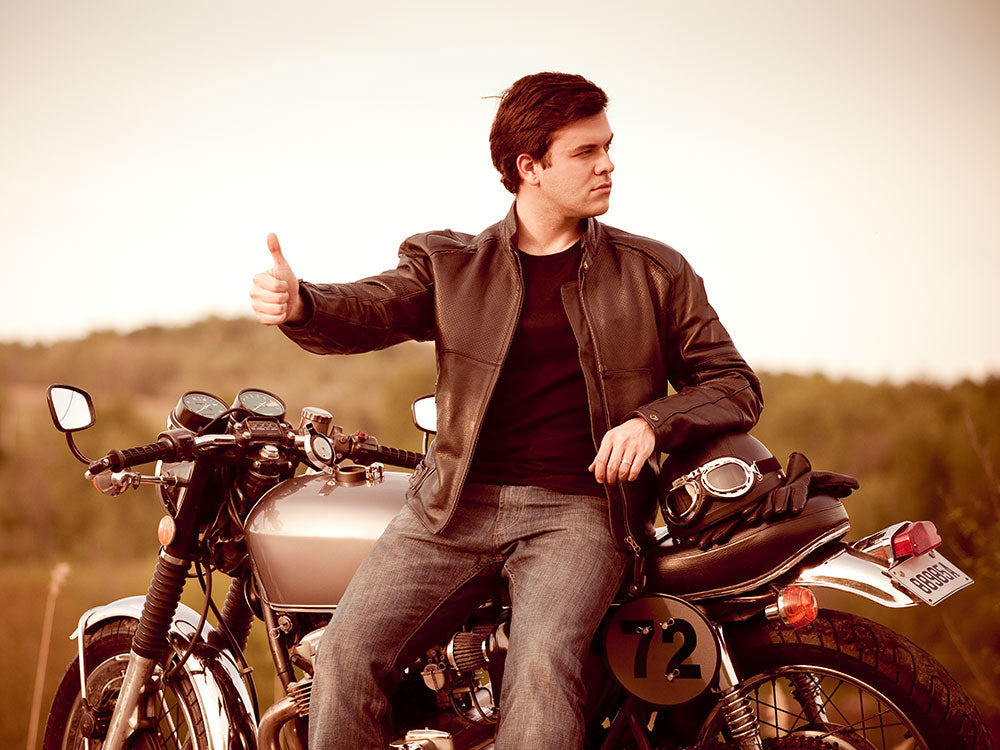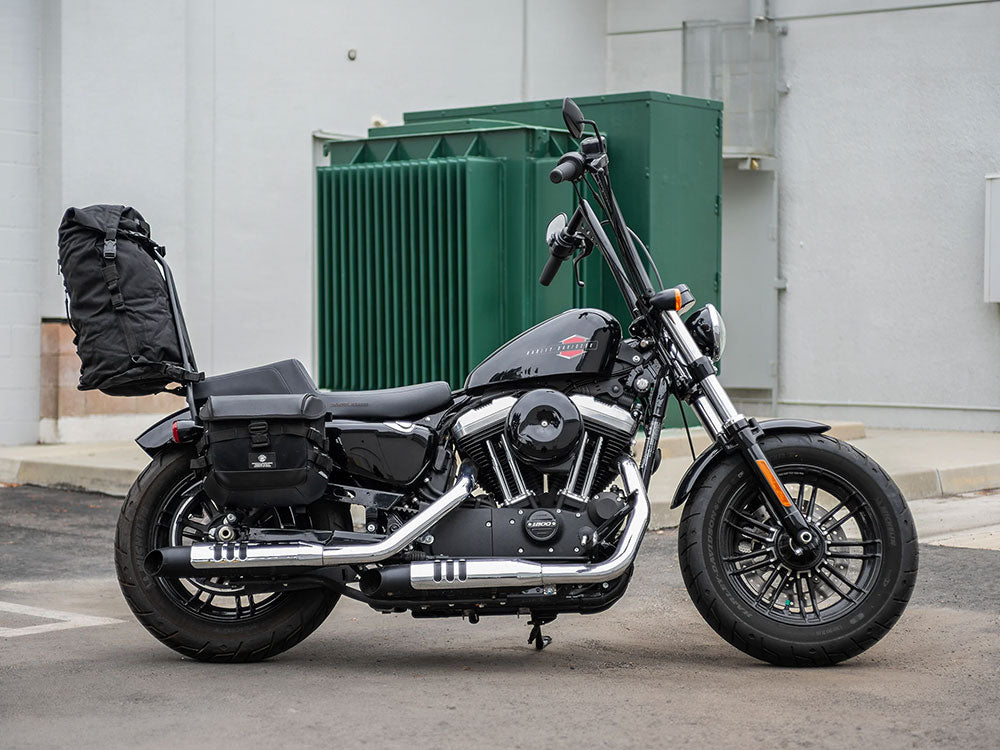Tired of your fairing’s dull and plain colors? Looking for a way to transform the look of your fairings? Since modifying the fairing itself can be expensive, it is best to give it a new coat of paint.
If you decide to paint your fairings, the next step is to choose the right type of paint. Rather than go to a professional mechanic for advice, get a coat of paint and apply it yourself.
Table of Content
1. What Are Fairings and Why Paint Them?
Fairings are plastic shells placed over the motorcycle frame that help reduce air drag and provide extra protection for your motorcycle.
1.1 Why Paint Fairings?
You can paint the fairing for the following reasons:
- Give the fairing a new look that complements the motorcycle.
- Cover any damage to the fairings.
- Reapply paint on dull or faded parts.
- Provide a protective coating in case of bad weather conditions.
2. All You Need to Know About the Paint System
Before applying paint to your fairings, you’ll need to select which basic paint system to use:
- Single-stage
- Two-stage
- Coating system
2.1 Single-Stage
For single-stage paint, you will apply a glossy color with a single coat of paint. It will help you restore any parts with faded colors. The industry terms for a single-coat system are “base coat” and “clear coat system.”
2.2 Two-Stage
Two-stage paint is best if you frequently ride your motorcycle year-round in different weather conditions. It requires applying a layer of paint underneath a protective coating for a matte glass finish.
2.3 Coating System
In the coating system, you will have to choose between 1k or 2k coating.
For 1k coating, no hardener or activator is used to facilitate paint curing. The most common examples are aerosol paints.
For 2k coating, the paint is mixed with a hardener before spraying to facilitate paint curing. Professional mechanics use 2k coating to increase durability when exposed to chemicals and bad weather conditions.
3. Types of Paint
Types of paint are split into categories based on the following factors:
- Chemicals
- Aesthetics
Chemicals
Some paints like acrylics can be removed with water, while other paints like lacquer and enamels require a solvent instead. Most paints have either oil or water as a base material.
Acrylic paint has a semi-glossy surface that is slightly flexible when dry. Enamel paint has a hard dry surface that can easily crack. Lacquer paint provides a good finish but is soft and difficult to maintain.
Aesthetics
Every type of paint has a different surface texture due to its chemical composition. Don’t use acyclic paints to paint motorcycle parts as they can be easily removed.
Enamel and acrylic-enamel paints are the best choices because their durable finishes are difficult to crack. Lacquer paints are best suited for giving a fairing a vintage look.
4. What To Look for When Choosing Paint for Fairings
Listed below are the factors to take into consideration when choosing the right paint for fairings:

4.1 Color
Don’t buy paints in colors that don’t suit your motorcycle. If the fairing doesn’t complement the motorcycle’s overall look, then it will create a conflicting color scheme that lowers aesthetic appeal.
Painting it, spending time, and investing all will become of no use just if color is not compatible. Choose the color carefully.
4.2 Quality of Paint
Different paints include different ingredients that can affect longevity, durability, time to dry, etc.
Cheap paints will give your motorcycle a fine temporary look but will start to peel off shortly after being applied. Mostly the riders, who paint the parts of motorcycles on their own, just got demotivated from their work because they haven’t selected the right type of paint.
Low-grade material paints gradually start removing from the fairings. So, if you don’t want to see all these issues, try choosing the paint that will work the best.
Choose quality paint that can handle high heat, winds, and rain.
4.3 Water Resistance
If you plan to go on a tour or off-roading, you will want to apply paint that will not become damaged or peel off if soaked by rain.
4.4 Mixture Quality
Check the mixture quality of the paint by inspecting the paint’s texture or seeing if the nozzle is clogged. It can be caused due to improper manufacturing and inefficiency of the paint.
4.5 Time to Dry
The time it takes for paint to dry after being applied can be 10 minutes, a few hours, or several days. Check the time it takes to dry labeled on the sides of the paint cans.
4.6 Quality of the Container
While choosing the paint to give a complementary look to the fairings don’t compromise on the finishing feature.
There are some paints that do not give a very fine look after application. So, choose the one that gives a very fine look. Many riders make the mistake of choosing paints whose colors conflict with their motorcycle’s frame. For example, if your motorcycle has a dark color, don’t apply bright colors.
Make sure to look over the condition of the paint container to make sure there are no openings or leaks that could have caused the paint to become dry. Paint containers that are sealed tightly will ensure they remain in good condition until it needs to be used.
5. Choosing the Best Paint for Motorcycle Fairings
Listed below are the recommended best motorcycle paints for motorcycle fairings:
5.1 Brush and Sprayer Paints:
Pros
- Single-Stage Paint with Shiny Finish
- Rustproof
- Easy to Apply
- Durable Protection
Cons
- May Require Double Coating
- Will Not Have Glossy Finish If Not Applied in Sequence
| Pros | Cons |
|---|---|
| Single-Stage Paint with Shiny Finish Rustproof Easy to Apply Durable Protection |
May Require Double Coating Will Not Have Glossy Finish If Not Applied in Sequence |
5.2 Can Sprayer Paints:
Pros
- High Quality
- Easy to Use
- Dries Quickly
- Ideal for Making Slight Aesthetic Changes to Motorcycle Parts
- UV Protection
- Rust-Resistant
Cons
- Can Be Incorrectly Applied
- Older Paint Can Become Clogged
- Requires Long Curing Time
| Pros | Cons |
|---|---|
| High Quality Easy To Use Dries Quickly Ideal for Making Slight Aesthetic Changes to Motorcycle Parts UV Protection Rust-Resistant |
Can Be Incorrectly Applied Older Paint Can Become Clogged Requires Long Curing Time |
5.3 Airbrush
Pros
- Can be Mixed With Water to Thin
- Easy Mix Set
- Useable With Various Tools
- Doesn’t Clog When Thin
- Comes with A Fast Dry Reducer
Cons
- Emits Unpleasant Smell
- Hard To Find Exact Color Combination
- Too Much Glossy Finish
| Pros | Cons |
|---|---|
| Can be Mixed With Water to Thin Easy Mix Set Useable With Various Tools Doesn’t Clog When Thin Comes with A Fast Dry Reducer |
Emits Unpleasant Smell Hard To Find Exact Color Combination Too Much Glossy Finish |
6. FAQs:
6.1 What Is the Best Paint to Spray on Motorcycle Fairings?
Are you worried about the running down colors of motorcycle fairings? Choosing the best paint will be the right decision. Choose enamel or acrylic-enamel paints. Listed below are the best paints to use when painting motorcycle fairings:
- Spray Max Paint for Motorcycle Fairings | High Glossy Finish
- Dupli-Color Paint for Motorcycle Fairings | Heat Resistant
- Meguiar’s Paint for Motorcycle Fairings | Seven-Piece Kit
- Dupli Paint for Motorcycle Fairings | Dries Fast
- Hydro Charge Paint for Motorcycle Fairings | Hides Imperfections
6.2 Can I Paint a Motorcycle Fairing at Home?
Yes, you can paint a motorcycle fairing at home to save service costs. Even If you haven’t painted motorcycle fairings before, it is an easy task. You will need sandpaper, primer, and spray paint to clean, prepare, and paint your motorcycle fairings.
7. Conclusion
It will be easier to customize your fairing if you know the kind of paint to use. When looking for the best paint for fairings, look for paint with aesthetic appeal, durability, and rustproof, as well as being easy to apply and requiring low maintenance. For safety and comfort, you should install crash bar, sissy bar, handlebar, and backrests and for storage, you can install saddlebags.













Leave a comment
All comments are moderated before being published.
This site is protected by hCaptcha and the hCaptcha Privacy Policy and Terms of Service apply.